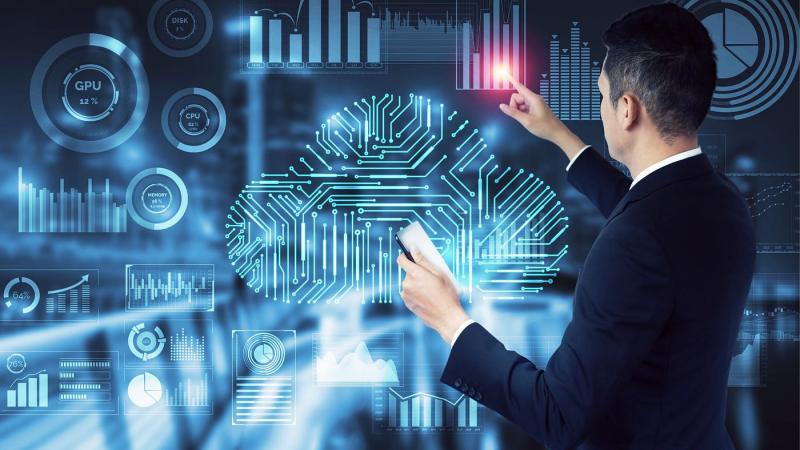How Machine Learning and AI are transforming the future of Data Science in 2025?

In this technological era, data is a crucial part of every organization. Years by year, companies are implementing automation processes to bring speedy production and accuracy. The organization used to collect, manipulate, and analyze data to identify the upcoming huddles and find the optimal solutions using novel techniques like Data Science and AI. Artificial Intelligence, Machine Learning Algorithms, and Data Science are interconnected approaches, together used to analyze and study large amounts of data for forecasting trends.
In 2025, three trending parts of data science – Generative AI, Predictive model, and Machine learning Algorithm will rule around the globe. This write-up will help a learner to know how the perfect amalgam of AI and Machine Learning is poising the future of Data Science in 2025. Trend predictions and data-driven decision-making is the goal for every organization. The company prefers trained professionals with data analytical skills.
An organization hires trained professionals with data visualization skills to quickly derive meaningful insight and information from a tremendous amount of data. Customer behavior, product preference, personalized marketing strategies, and supply chain management, all these significant tasks are managed by machine learning models and accelerate business transformation.
Generative AI and pattern recognition are two important techniques of AI that are used to identify the relationship among datasets and prepare for upcoming challenges.
The Core fundamentals of Data Science are:
1. Statistical Approach: The Backbone
Statistics is the core branch of data science that deals with collecting, analyzing, and interpreting data. The statistical approach enables professionals to discover meaningful insights from unsorted datasets. Statistical methods ranging from hypothesis testing to regression analysis are the essential tools required in data-driven decisions.
2. Machine Learning: Predictive Models
A machine learning model is the subset of Artificial Intelligence, a powerful system used to identify patterns and predict future outcomes without any explicit programming. Accurate prediction is the essential methodology used to make informed predictions from current datasets. The machine learning model is implemented to predict future outcomes based on historical data.
3. Generative AI:
Generative AI is one of the exciting techniques that allow machines to learn about relationships and patterns within complex datasets automatically. The technology is like a tree that needs proper ingredients to yield fruits. Just as an apple tree requires fertile soil, water, and adequate sunlight to deliver juicy fruits similarly, generative AI requires sorted data to generate qualitative content. Ultimately, the organized data stream is the foremost priority in the Data Science World.
4. Data Engineering: The infrastructure
The existence of Data Science is not possible without substantive datasets. It is a strong myth that data science is used to create complicated models or only for writing complex code. It is all about utilizing the collected data to produce impactful decisions for the future growth of an organization.
The Data Scientists used to track the seamless flow of data, and its reliable sources to bring magic to their work. The aspirants who want to learn this magic must clear the Data Science Certification 2025. A recent report presented by Grand View Research signifies burgeoning growth in Generative AI. They stated that the global AI market is expected to grow by $1597 billion by 2030.
The latest data science trends for 2025 indicate that Machine Learning and AI are the ultimate tools for future growth but need accurate and complete datasets.
Basic Skills Set Require to Start Career in Data Science
1. Analytical Thinking - an ability to solve complex problems by breaking into simpler jobs and creating hypotheses accordingly
2. Programming Skills- Python and R are the crucial programming languages required to manipulate existing data sets or extract meaningful information from unsorted clusters of data.
3. Data Visualization- a technique used to convert complex datasets into visually compelling insights such as graphs, interactive dashboards, and charts.
4. Communication skills- Presentation and speaking skills are the mandatory part of effective communication. Whether the connection is verbal or written it should be clear and precise. A person expecting a victorious career in data science must learn how to explain technical theory & proposal to a non-technical audience.
5. Critical Thinking – an ability to think out of the box in unexceptional cases.
How Data Science relates to AI and ML
AI and Data Science both are gaining popularity due to their replicating nature and pretend like human mind through feed datasets. Though, both fields have their own scope and service areas still, coupled together to deliver customization and optimal future outcomes. AI indicates action-planned based on perception.
Insight > Strategy > Action > Feedback of Perception
Summary
AI, Data Science, and ML are overlapping concepts, together integrated to solve real-world problems. Data Science uses pattern matching and probability theory to find the optimum solution. Data Science certification program prepares you with the required knowledge base and useful skills to tackle real-world data analysis challenges. Machine learning Models continue to bring accessibility of new methods to sharpen the future. These innovations solve complex problems and bring advancements across various sectors.
Comments